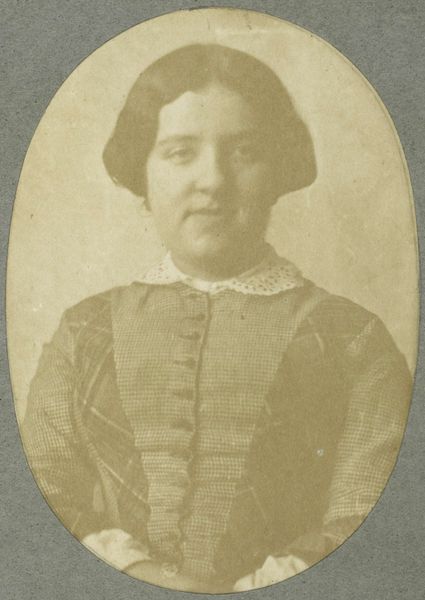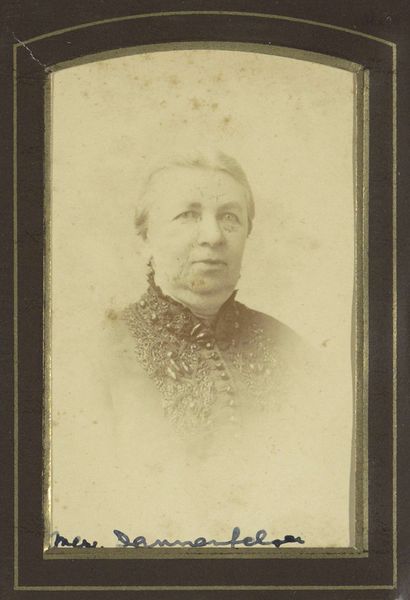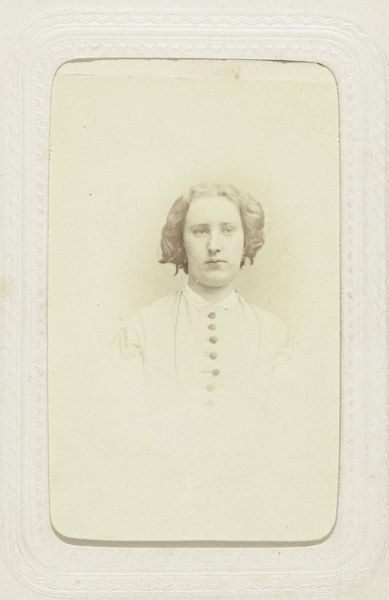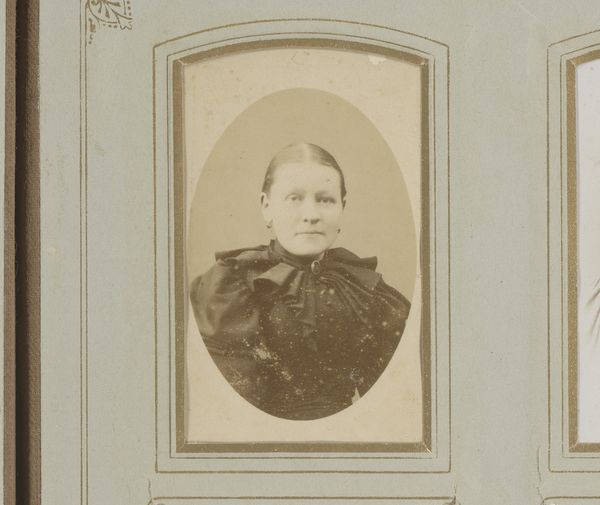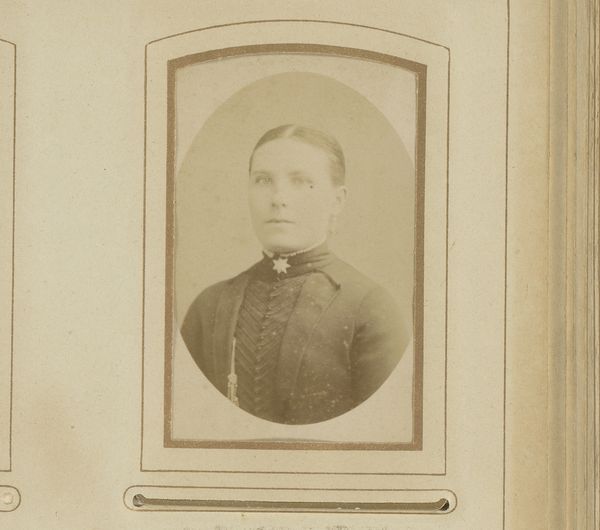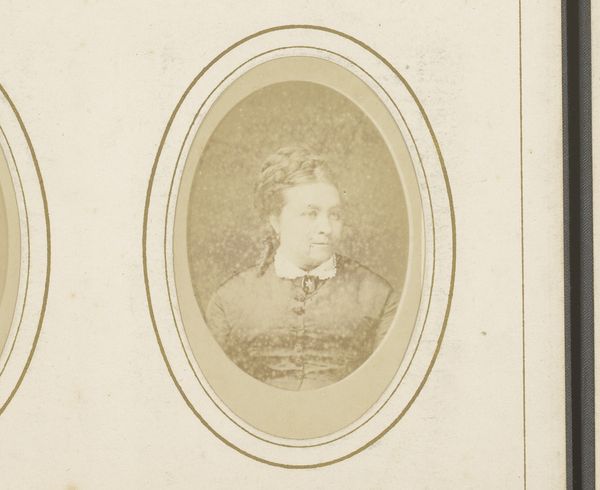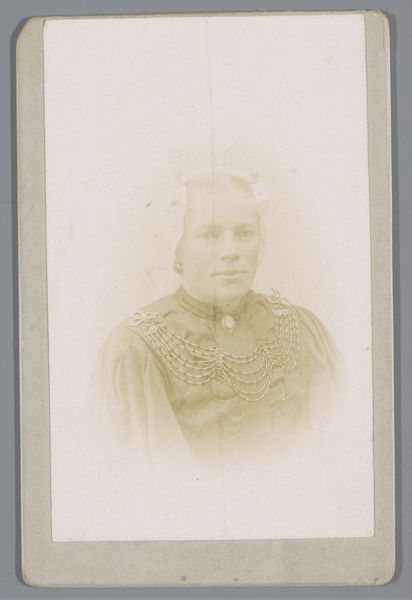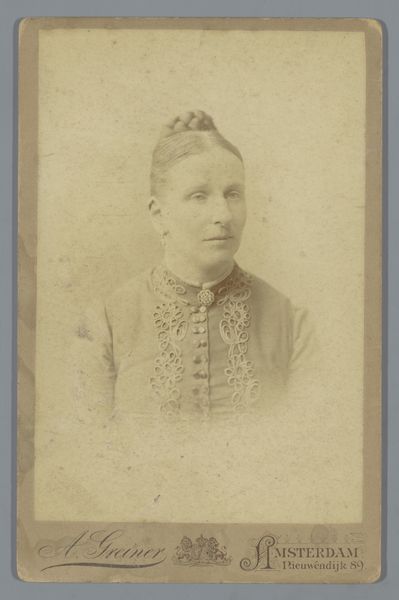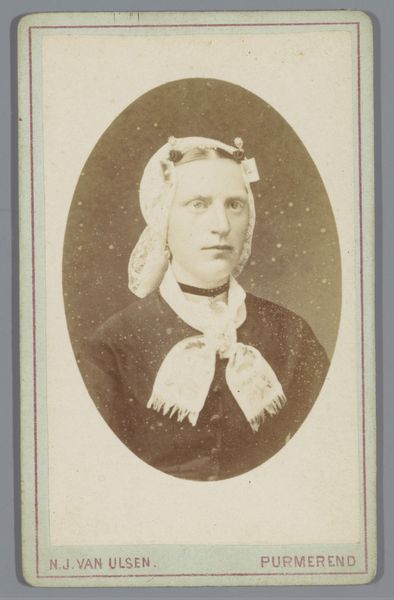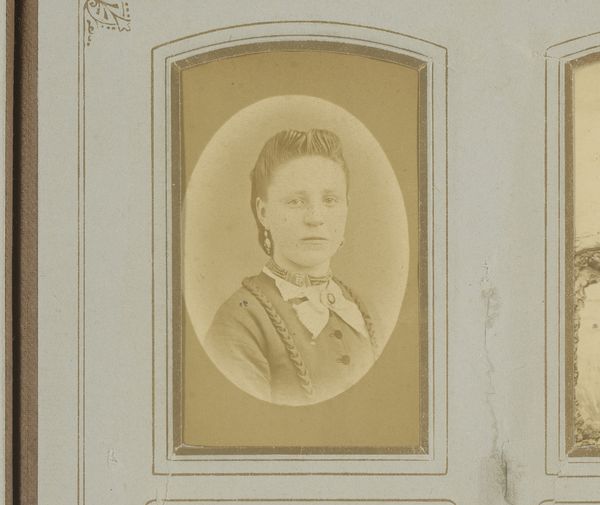
photography, albumen-print
#
portrait
#
photography
#
albumen-print
Dimensions: height 103 mm, width 71 mm
Copyright: Rijks Museum: Open Domain
Curator: Looking at this portrait, it is immediately evocative of stillness and a contained inner life. Editor: This is an albumen print dating back to around 1852, a portrait of Charlotte Asser, created by Eduard Isaac Asser, presently housed at the Rijksmuseum. Eduard Asser was a lawyer and writer but also a pioneer of photography in the Netherlands, even co-inventing a photographic process called "photo-etching". It really speaks to the emerging status of photography as both a mode of documentation and artistic practice at the time. Curator: Absolutely. The oval shape immediately invokes a sense of formality, even preciousness. Albumen prints themselves, known for their clarity and detail, carry an inherent symbolism related to preservation and memory. This shape often carries an almost locket-like aura. Editor: In Dutch society then, portraiture, regardless of the medium, served significant social functions. It demonstrated social standing, familial connections, and commemorated individuals for posterity. Photography, rapidly evolving as it was, provided new avenues for these displays of status and remembrance, even in the relatively reserved sphere of Dutch portraiture. Curator: Consider how the details are rendered. The buttoned bodice with its high collar, the modest hairstyle... It speaks volumes about the visual codes governing women’s representation, placing emphasis on propriety and decorum. But her steady gaze hints at an interior life that is less easily categorized, hinting at individuality amidst societal constraints. It suggests a cultural value that associates her public image to her family status. Editor: What do you make of her expression, or rather, the affect achieved here? The somewhat muted tones contribute to what some might see as melancholic but perhaps simply reflects the technical constraints of early photography or, indeed, a stylistic choice linked to cultural sensibilities of the time. Curator: A valid point about both the technical aspects and stylistic trends. Yet, within those parameters, there remains the face, a meeting point of individual and the collective understanding of self. Perhaps her somewhat somber expression is as much about the sitter reflecting on being 'captured', as it were, and what being rendered immortal means. The idea that photography will, from then on, be inseparable from the public imagination is so interesting here. Editor: A striking photograph, technically innovative, and socially insightful. Curator: Indeed, it allows us to glimpse not only a face from the past, but also the very mechanisms through which that face was presented and, perhaps, understood.
Comments
No comments
Be the first to comment and join the conversation on the ultimate creative platform.

